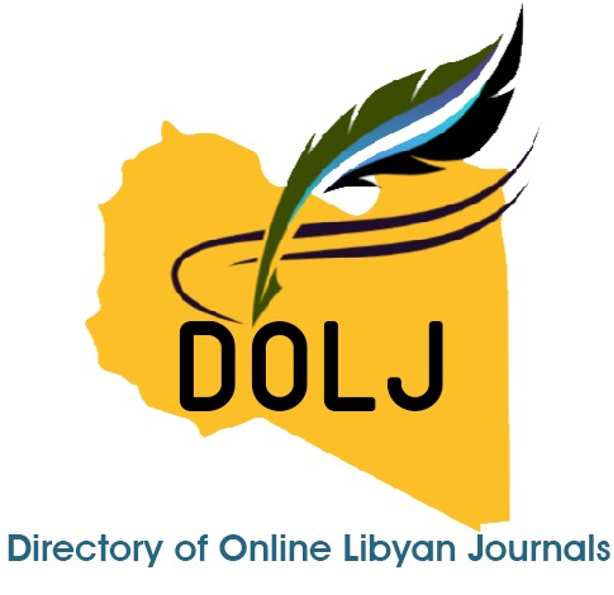Introducing the Communicative Approach in Libya: Resistance and Conflict
DOI:
https://doi.org/10.36602/faj.2015.n04.10Keywords:
Eclectic Approach, Language Learning Styles, Cultural Resistance, Communicative Language TeachingAbstract
Communicative Language Teaching (CLT) in Libya. Despite CLT being a widely accepted approach globally, it faces resistance in Libyan classrooms due to cultural beliefs, teacher preparation, exam systems, and traditional educational practices. The author argues that successful implementation of CLT requires an understanding of local educational values and calls for a flexible, culturally sensitive approach to teaching English in Libya.
References
Altaieb, S. (2013). Teachers’ Perception of the English language Curriculum in Libyan Public Schools: An investigation and assessment of implementation process of English curriculum in Libyan public high schools (Doctoral dissertation, University of Denver).
Anderson, J. (1993). ‘Is a communicative approach practical for teachingEnglish in China? Pros and cons’, System, 21(4): 471–480.
Barakat, H. (1993). The Arab world: Society, culture, and state. University of California Press.
Canale, M. & Swain, M. (1980) 'Theoreticalbases of co-municative approaches to second language teaching and testing' Applied Linguistics 1, 1, pp. 1-47.
Cook, B. J. (1999). Islamic versus Western conceptions of education: Reflections on Egypt. International Review of Education, 45(3-4), 339-358.
Elabbar, A. A. (2011). An investigation of influences affecting Libyan English as Foreign Language University Teachers (LEFLUTs), teaching approaches in the language classrooms (Doctoral dissertation, University of Glasgow).
Ellis, G. (1996). How culturally appropriate is the communicative approach? ELT journal, 50(3), 213-218.
Gewider, R. S. (2012). Libya in the modern orientalist world-system: A critical analysis of English Language acquisition (ELA) as a factor in Libya‟ s new developmental strategy (Doctoral dissertation).
Hayes, D. (2009). Non-native English-speaking teachers, context and English language teaching. System, 37(1), 1-11.
Hymes, D (l972) On communicative competence. In: Pride JB, Holmes, J (eds.) Sociolinguistics: Selected Readings. Penguin, Harmondsworth, pp 269–293
Hu, G. (2002). Potential cultural resistance to pedagogical imports: The case of communicative language teaching in China. Language Culture and Curriculum, 15(2), 93-105.
Javid, C. Z., Farooq, M. U., &Gulzar, M. A. (2012). Saudi English-major undergraduates and English Teachers' perceptions regarding effective ELT in the KSA: A Comparative Study. European Journal of Scientific Research, 85(1), 55-70.
Jha, S. K. (2014). Shall We Teach English as a Subject or as a Language? Education Practice and Innovation, 1(1), 10-17.
Larsen-Freeman, D., 1986. Techniques and Principles in Language Teaching. NY: Oxford University Press.
Najeeb, S. and Eldokali, E. (n. d). English in Libya: The language of development [Online]. Available from: http://www.iairs.org/Abstracts_english/INV. pdf [Accessed: 18/02/ 2015].
Orafi, S. (2013). Effective Factors in the Implementation 0f ELT Curriculum Innovations. Scientific Research Journal, I, (V), 14-21
Orafi, S., & Borg, S. (2009). Intentions and realities in implementing communicative curriculum reform. System, 37 (2), 243-253.
Ozsevik, Z. (2010). The use of communicative language teaching (CLT): Turkish EFL teachers' perceived difficulties in implementing CLT inTurkey. Unpublished MA thesis, University of Illinois at Urbana-
Pathan, M., & Al-Dersi, Z. (2013). Investigating the Role of Short-Stories in Overcoming the Problems Faced by the Libyan EFL Learners in Reading Comprehension Skill. The Criterion an International Journal in English, 12 1-8
Richards, J. C., & Rodgers, T. S. (1986). Approaches and methods in language teaching. Cambridge: Cambridge University Press.
Rubenstein, I. Z. (2006). Educational expectations: How they differ around the world: Implications for teaching ESL college students. Community College Journal of Research and Practice, 30(5-6), 433-441.
Scarcella, R. C., Anderson, E. S. &, Krashen, S. D. (1990). Developing Communicative Competence in a Second Language, Boston: Heinle & Heinle Publishers.
Vaezi, S., &Abbaspour, E. (2014). Implementing CLT in the Iranian Context: “Reality” Versus Theory. Procedia-Social and Behavioral Sciences, 98, 1905-1911.
Downloads
Published
How to Cite
Issue
Section
License
Copyright (c) 2015 إبراهيم أبوختالة

This work is licensed under a Creative Commons Attribution 4.0 International License.
All works published in this journal are licensed under the Creative Commons Attribution 4.0 International License (CC BY 4.0), which permits use, sharing, adaptation, and redistribution for any purpose, including commercial ones, provided that proper credit is given to the original author and source, a link to the license is provided, and any changes made are indicated.

















